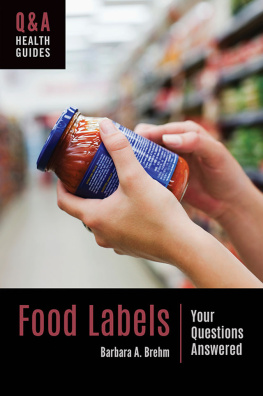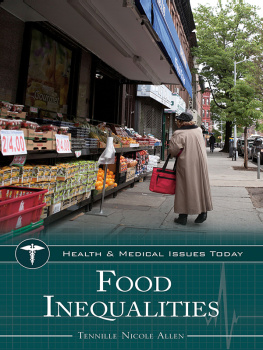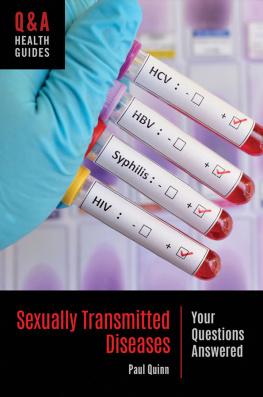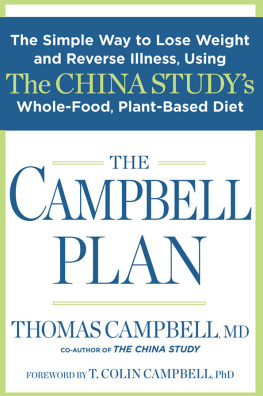Food Labels
Recent Titles in Q&A Health Guides
Sexually Transmitted Diseases: Your Questions Answered
Paul Quinn
Mindfulness and Meditation: Your Questions Answered
Blaise Aguirre
Anxiety and Panic Disorders: Your Questions Answered
Daniel Zwillenberg
Substance Abuse: Your Questions Answered
Romeo Vitelli
Eating Disorders: Your Questions Answered
Justine J. Reel
Food Allergies and Sensitivities: Your Questions Answered
Alice C. Richer
Obesity: Your Questions Answered
Christine L. B. Selby
Birth Control: Your Questions Answered
Paul Quinn
Therapy and Counseling: Your Questions Answered
Christine L. B. Selby
Depression: Your Questions Answered
Romeo Vitelli
FOOD LABELS
Your Questions Answered
Barbara A. Brehm
Q&A Health Guides
Copyright 2019 by ABC-CLIO, LLC
All rights reserved. No part of this publication may be reproduced, stored in a retrieval system, or transmitted, in any form or by any means, electronic, mechanical, photocopying, recording, or otherwise, except for the inclusion of brief quotations in a review, without prior permission in writing from the publisher.
Library of Congress Cataloging in Publication Control Number: 2019033120
ISBN: 978-1-4408-6366-0 (print)
978-1-4408-6367-7 (ebook)
23 22 21 20 19 1 2 3 4 5
This book is also available as an eBook.
Greenwood
An Imprint of ABC-CLIO, LLC
ABC-CLIO, LLC
147 Castilian Drive
Santa Barbara, California 93117
www.abc-clio.com
This book is printed on acid-free paper 
Manufactured in the United States of America
This book discusses treatments (including types of medication and mental health therapies), diagnostic tests for various symptoms and mental health disorders, and organizations. The author has made every effort to present accurate and up-to-date information. However, the information in this book is not intended to recommend or endorse particular treatments or organizations, or substitute for the care or medical advice of a qualified health professional, or used to alter any medical therapy without a medical doctors advice. Specific situations may require specific therapeutic approaches not included in this book. For those reasons, we recommend that readers follow the advice of qualified health care professionals directly involved in their care. Readers who suspect they may have specific medical problems should consult a physician about any suggestions made in this book.
Contents
All of us have questions about our health. Is this normal? Should I be doing something differently? Whom should I talk to about my concerns? And our modern world is full of answers. Thanks to the Internet, theres a wealth of information at our fingertips, from forums where people can share their personal experiences to Wikipedia articles to the full text of medical studies. But finding the right information can be an intimidating and difficult tasksome sources are written at too high a level, others have been oversimplified, while still others are heavily biased or simply inaccurate.
Q&A Health Guides address the needs of readers who want accurate, concise answers to their health questions, authored by reputable and objective experts, and written in clear and easy-to-understand language. This series focuses on the topics that matter most to young adult readers, including various aspects of physical and emotional well-being as well as other components of a healthy lifestyle. These guides will also serve as a valuable tool for parents, school counselors, and others who may need to answer teens health questions.
All books in the series follow the same format to make finding information quick and easy. Each volume begins with an essay on health literacy and why it is so important when it comes to gathering and evaluating health information. Next, the top five myths and misconceptions that surround the topic are dispelled. The heart of each guide is a collection of questions and answers, organized thematically. A selection of five case studies provides real-world examples to illuminate key concepts. Rounding out each volume are a directory of resources, glossary, and index.
It is our hope that the books in this series will not only provide valuable information but will also help guide readers toward a lifetime of healthy decision making.
I would like to acknowledge with heartfelt gratitude my colleagues in the Department of Exercise and Sport Studies at Smith College, especially Lynn Oberbillig who took over all chair responsibilities during my sabbatical semester and always does more than her share of the heavy lifting in administrative work for our department. Sarah Witkowski has steadily helped steer our ship in productive directions so that I was able to give more thought to this project. Our administrative assistant Rachel Cook always keeps the ball rolling no matter what difficulties arise. We are a good team!
Many thanks to Smith College for the support of my sabbatical leave, and for the many ways Smith supports faculty development at all stages of our careers. Thanks also to my nutrition and my sports nutrition students who ask interesting questions and help keep me in touch with the issues important to young people today. My student advisees in Smiths Sustainable Food Concentration at Smith have been especially inspirational to work with.
Thanks also to my family and friends who shared their questions about food labels and gave feedback on essays. Thanks especially to my sons Ian, for sharing a writers retreat with me, and Adam, for conversations about food, for his concern for environmental sustainability, and making me drink a smoothie with dried crickets in it.
Thanks to all farmers raising food, including those in my family, the hill towns of Western Massachusetts, and farmers around the world. I am also grateful to the local groups I have gotten to know that educate young people about growing food, especially the Hartsbrook Waldorf School and Hampshire College.
And finally, many thanks to Maxine Taylor at Greenwood/ABC-CLIO for her ideas and support throughout this project. This book was her inspiration, and I have thoroughly enjoyed working on it. Thanks also to Michelle Scott and the team at Greenwood that turned my manuscript into a book.
Food labels provide a lot of helpful information to people who take the time to read them. The purpose of this book is to answer questions people have about the information they find on food labels. While much of this information is fairly straightforward, it makes more sense when consumers have a context for understanding what all the text and numbers really mean.
Because food label information is condensed, and must fit into a small areathe food labelit must be general; not all of the information, especially nutrient values, applies to each consumer. In addition, the packaging on food products is a combination of advertising and regulated claims. It is important for consumers to know which is which, and what the regulated claims actually mean.
This book opens with the most common misconceptions many people hold about the information on food labels, then specifically answers important questions about the regulation and meaning of information found on food labels. The first section addresses the regulation of food labels (How are food labels regulated in the United States?) and questions about label accuracy (How accurate is the information on food labels?). The next section dives into questions about the information on the Nutrition Facts panel (What are Daily Values, and what does % Daily Value mean?). Many people rely on food labels to avoid certain ingredients, especially allergens. A section on using the ingredient list and allergen statement helps consumers with important, even life-saving, questions in this area. The last set of questions looks at other labels and claims found on food labels, exploring questions about health claims (What health claims are allowed on food labels, and who decides whether a product label can include that claim?), along with questions about non-GMO, organic, and humane treatment of animal certifications. The book concludes with examples of people using the information on food labels in a variety of ways, a glossary of relevant terms, and a list of resources that may be helpful to readers.















